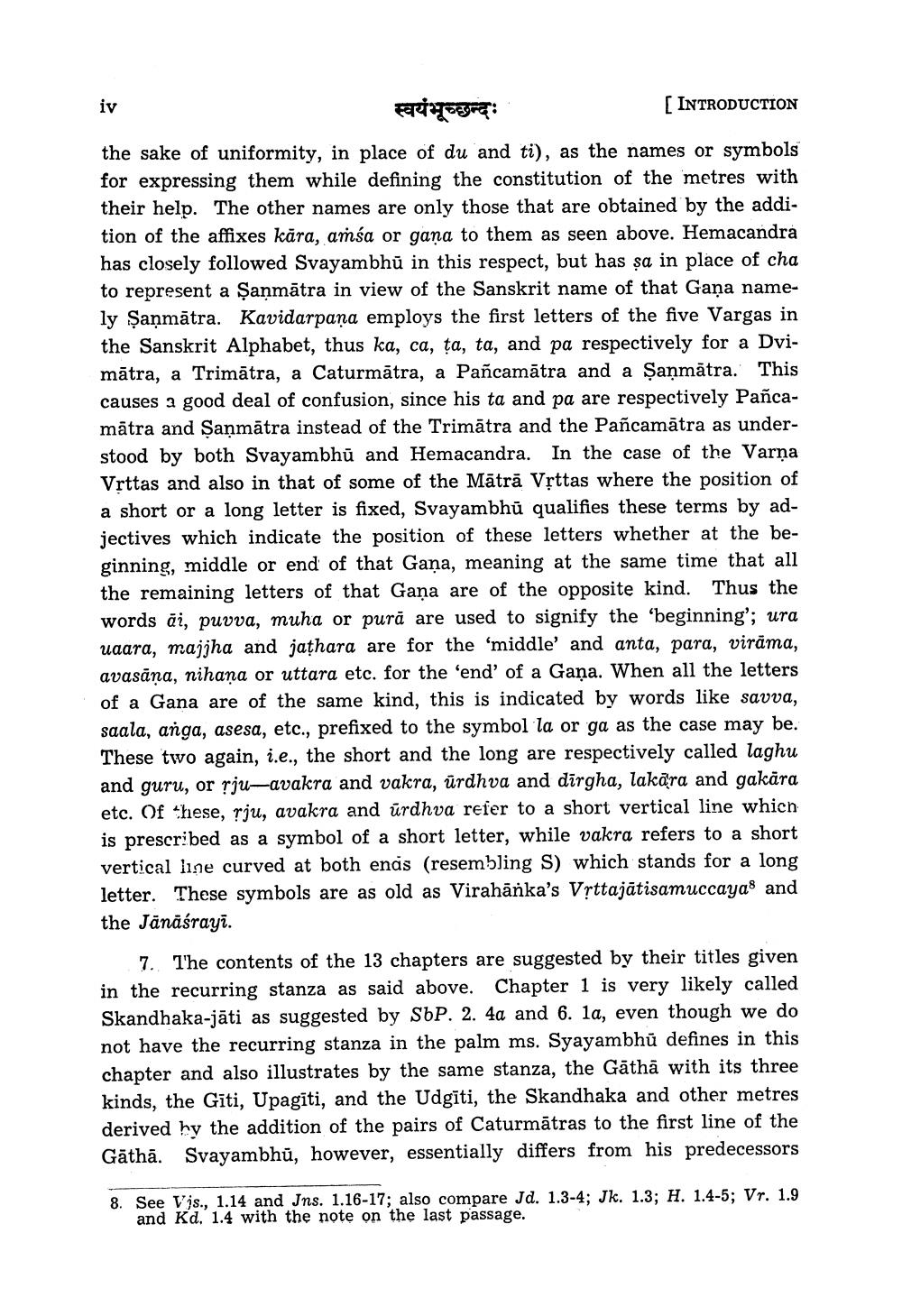________________
iv
स्वयंभूच्छन्दः
the sake of uniformity, in place of du and ti), as the names or symbols for expressing them while defining the constitution of the metres with their help. The other names are only those that are obtained by the addition of the affixes kāra, aṁsa or gana to them as seen above. Hemacandra has closely followed Svayambhu in this respect, but has sa in place of cha to represent a Sanmätra in view of the Sanskrit name of that Gana namely Ṣaņmātra. Kavidarpana employs the first letters of the five Vargas in the Sanskrit Alphabet, thus ka, ca, ta, ta, and pa respectively for a Dvimātra, a Trimātra, a Caturmātra, a Pañcamātra and a Sanmatra. This causes a good deal of confusion, since his ta and pa are respectively Pañcamatra and Sanmātra instead of the Trimātra and the Pañcamātra as understood by both Svayambhu and Hemacandra. In the case of the Varṇa Vrttas and also in that of some of the Matrā Vṛttas where the position of a short or a long letter is fixed, Svayambhu qualifies these terms by adjectives which indicate the position of these letters whether at the beginning, middle or end of that Gana, meaning at the same time that all the remaining letters of that Gana are of the opposite kind. Thus the words ai, puvva, muha or pură are used to signify the 'beginning'; ura uaara, majjha and jaṭhara are for the 'middle' and anta, para, virama, avasāna, nihana or uttara etc. for the 'end' of a Gana. When all the letters of a Gana are of the same kind, this is indicated by words like savva, saala, anga, asesa, etc., prefixed to the symbol la or ga as the case may be. These two again, i.e., the short and the long are respectively called laghu and guru, or rju-avakra and vakra, urdhva and dirgha, lakara and gakāra etc. Of these, rju, avakra and urdhva refer to a short vertical line which is prescribed as a symbol of a short letter, while vakra refers to a short vertical line curved at both ends (resembling S) which stands for a long letter. These symbols are as old as Virahanka's Vṛttajatisamuccayas and the Jānāśrayi.
[INTRODUCTION
7. The contents of the 13 chapters are suggested by their titles given in the recurring stanza as said above. Chapter 1 is very likely called Skandhaka-jāti as suggested by SbP. 2. 4a and 6. 1a, even though we do not have the recurring stanza in the palm ms. Syayambhu defines in this chapter and also illustrates by the same stanza, the Gatha with its three kinds, the Gīti, Upagīti, and the Udgīti, the Skandhaka and other metres derived by the addition of the pairs of Caturmātras to the first line of the Gāthā. Svayambhu, however, essentially differs from his predecessors
8. See Vjs., 1.14 and Jns. 1.16-17; also compare Jd. 1.3-4; Jk. 1.3; H. 1.4-5; Vr. 1.9 and Kd. 1.4 with the note on the last passage.




